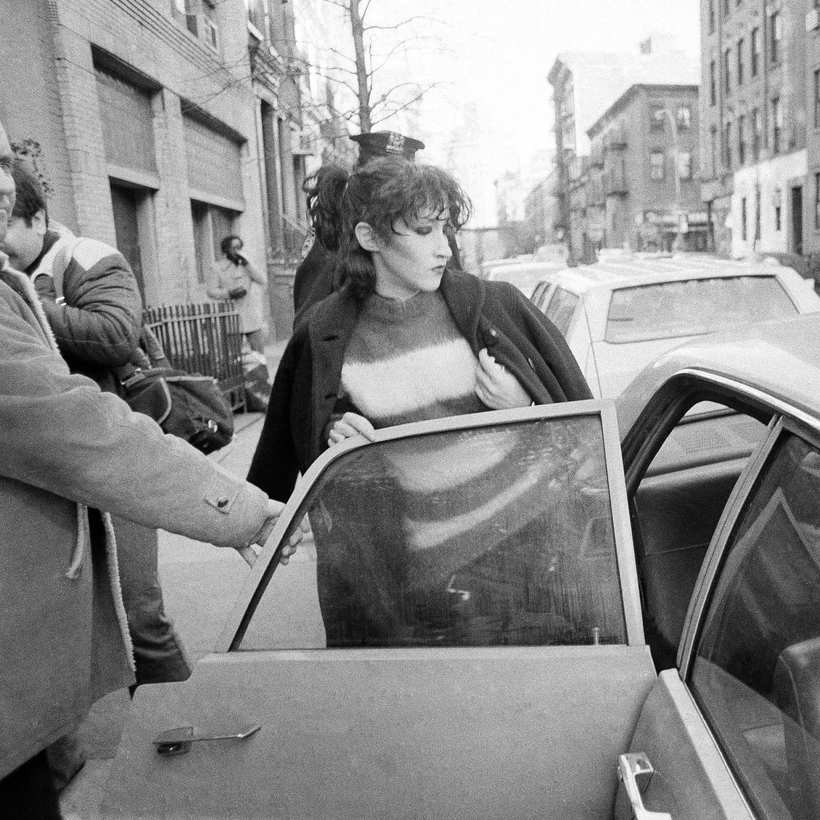Does a street that’s only six blocks long rate a whole book? I wouldn’t have thought so, and I’ve lived at both ends of it (22 Bank and 123 Bank). But Donna Florio’s Growing Up Bank Street turned me around. The fact is that this modest strip of brownstones and smallish apartment buildings has had a monumental impact on American culture.
John Dos Passos (11 Bank) wrote Manhattan Transfer while living there, and an 18-year-old Lauren Bacall (75 Bank) was crowned “Miss Greenwich Village.” John Cage and Merce Cunningham (107 Bank) let John Lennon and Yoko Ono (105 Bank) use the phone to avoid F.B.I. surveillance. Pretty much anyone who’s ever been in a Martin Scorsese movie trained at HB Studio (120 Bank), and Where the Wild Things Are and Goodnight Moon were workshopped at the Bank Street Writers Lab (69 Bank).

Over at Bell Telephone Laboratories (technically 463 West Street, but one side of the building faces Bank), researchers developed such breakthrough technologies as the transistor, the silicon solar cell, and the laser—all this with the elevated train rumbling through the middle of the building. When Bell Labs moved out, the complex was converted by overseeing architect Richard Meier into the Westbeth Artists Community, among the first adaptive-reuse projects in the country.
The only daughter of a theater director and a soprano, Florio grew up backstage at the Amato Opera, on Bleecker Street, and made her own debut in Madama Butterfly when she was four. “I toddled around a warm backstage world of Egyptian slaves, French courtesans, and Spanish gypsies,” Florio writes. “Women in thick white nylon panties and pointy cone bras smiled as they patted on pancake makeup, and then sat me carefully on their costumes, whispering Dr. Seuss and fairy tales as we turned the pages together.”
When Florio was seven, her mother joined the Metropolitan Opera, then on West 39th Street. A star at the Amato, she now found herself cast as “Peasant” and “Courtier.” Florio’s father, struggling to pay the bills, left the theater altogether to take a job in—what else?—plastics. Their freewheeling adventure had become a grind, and they blamed little Donna. “You ruined my life by being born!” her father said more than once. When your apartment is 325 square feet, there’s nowhere to hide, so Florio sought refuge in the arms of Bank Street.

The people in this book can broadly be divided into three categories. First, there are Florio’s neighbors. Some of these sketches would have benefitted from a less sentimental edit, but others are fascinating—the retired Shakespearean actor who wore a cravat around the Village but roamed the halls of the author’s building naked, or the butler to a pair of choreographers who joined the Guardian Angels and made his patrols in a mink coat—and a few are genuinely moving.
When your apartment is 325 square feet, there’s nowhere to hide, so Florio sought refuge in the arms of Bank Street.
Then there are the famous people, noted mostly in passing, with one memorable exception: in December 1978, Michelle Robinson, who lived across the hall from Florio, became the girlfriend of Sid Vicious. “I was underwhelmed,” Florio writes of her first encounter with the erstwhile Sex Pistol, who had been charged a few months earlier with the murder of Nancy Spungen. “He mumbled greetings, then stared absently into space, blinking.” On February 3, 1979, Florio awoke to a media circus; Vicious had died from a heroin overdose during the night. “For months Sid’s mourners blocked our way up the stoop and littered the building, leaving flowers, beer, letters, and candles, and writing messages to him on the walls.”

O.K., maybe two memorable exceptions: at Florio’s 1969 junior-high graduation, her father got into a shouting match with the commencement speaker, soon-to-be congresswoman Bella Abzug (37 Bank).
Finally, there are the people in limbo somewhere between fame and obscurity, and their stories might be the most interesting of all. Who remembers that Jack Gilford (75 Bank), the kindly man in the Cracker Jack commercials, stood up to the House Un-American Activities Committee, or that he was the M.C. at the city’s first inter-racial nightclub and dated Lena Horne? (A pair of actual Soviet spies meanwhile lived at 63 Bank.)

Or how about Yeffe Kimball (11 Bank), the activist Osage artist with works shown in the Museum of Modern Art and the Whitney who was actually a white farm girl from Missouri named Effie Goodman? Or Marion Tanner (72 Bank), the bohemian dowager who claimed to be the model for her nephew Patrick Dennis’s best-selling novel Auntie Mame, and never locked the doors on her four-story town house?
“Every street in America is a Bank Street in its own way,” Florio writes in closing, not too convincingly.
Ash Carter is the Features Editor for AIR MAIL and the co-author of Life Isn’t Everything: Mike Nichols, as Remembered by 150 of His Closest Friends


